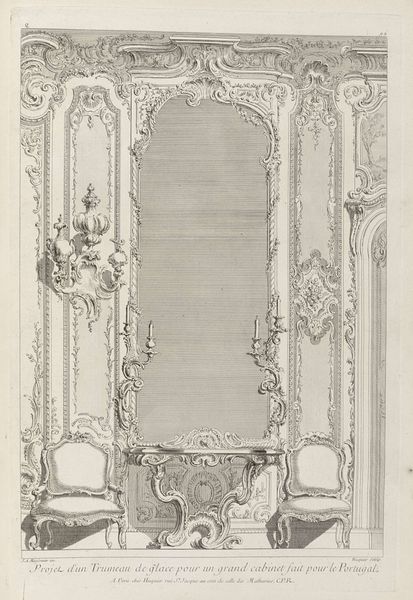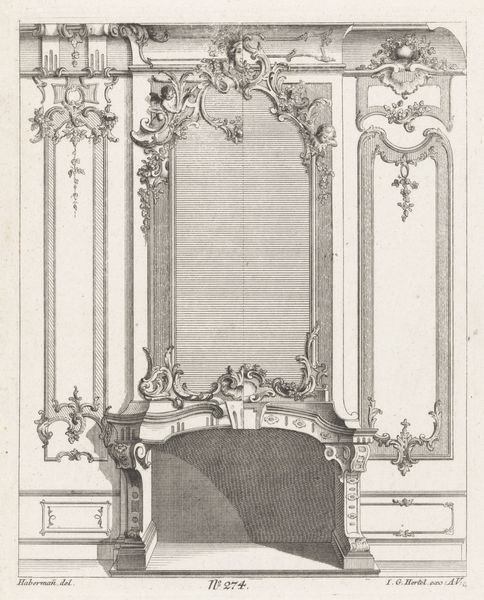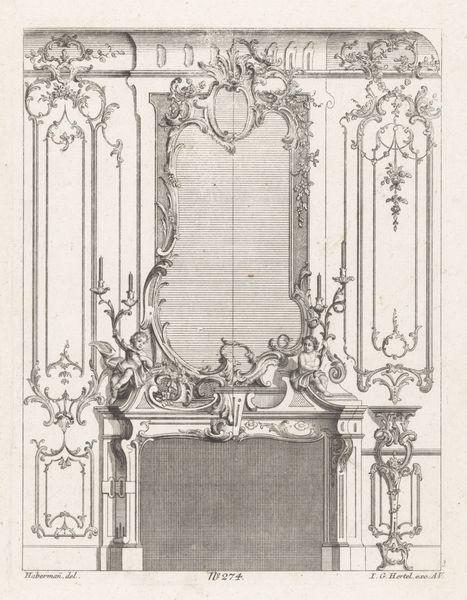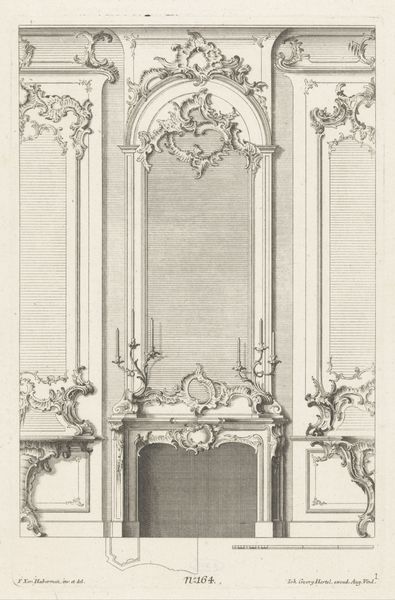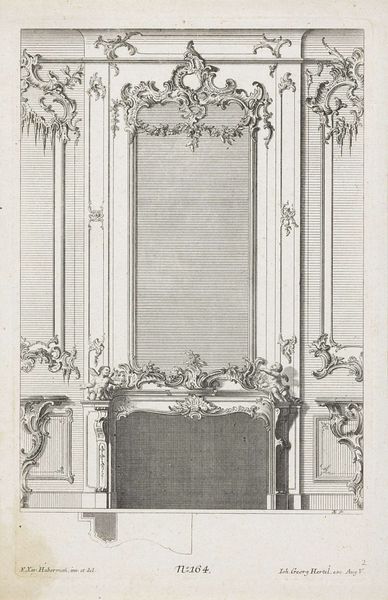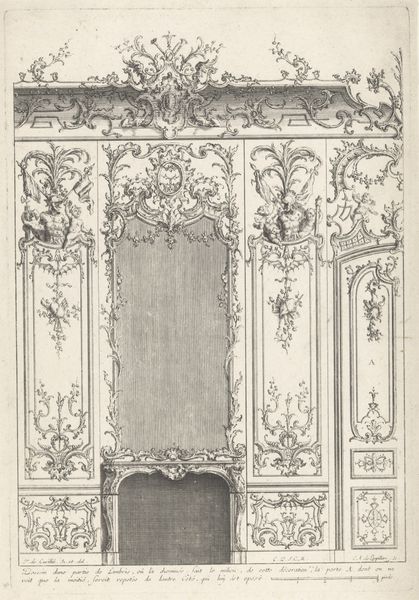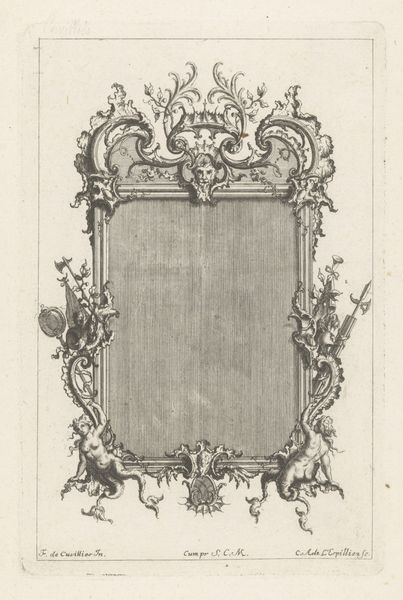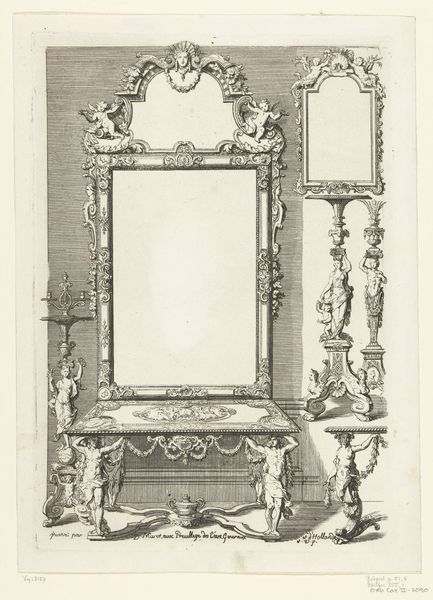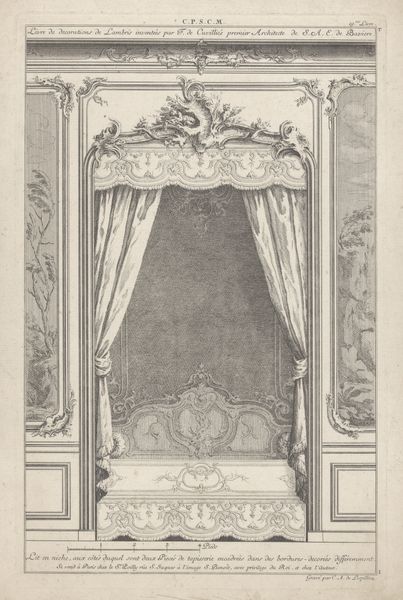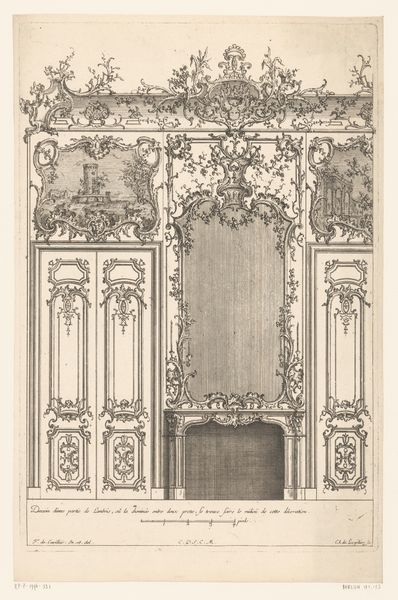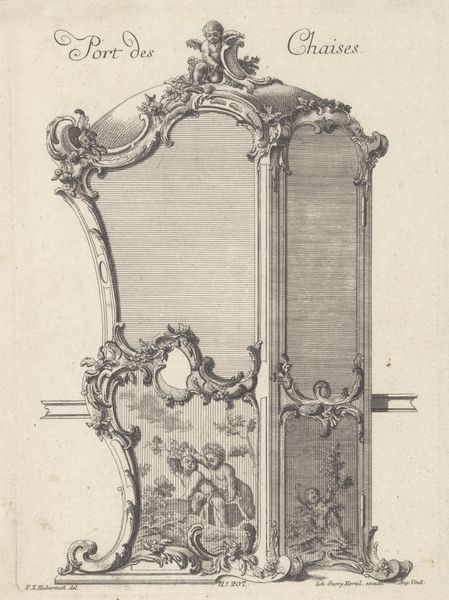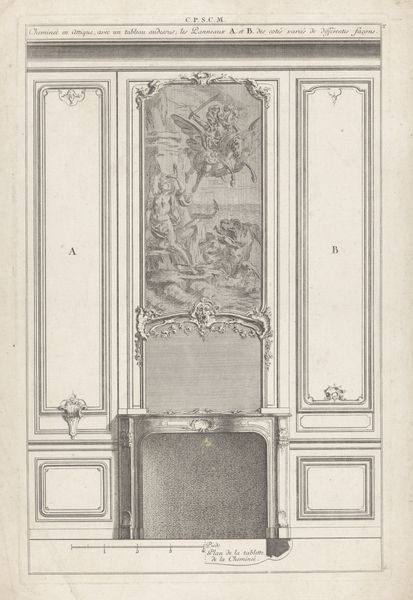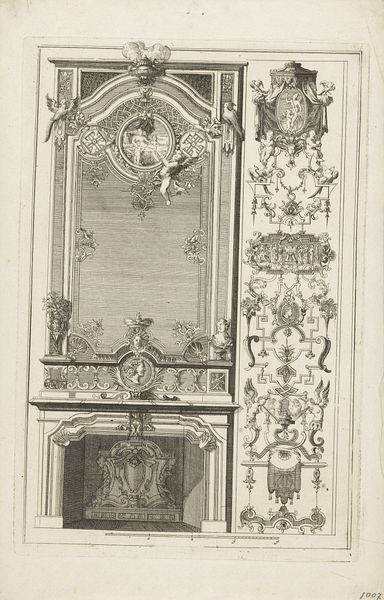
drawing, print, etching, engraving
#
drawing
#
baroque
# print
#
etching
#
history-painting
#
engraving
Dimensions: height 352 mm, width 228 mm
Copyright: Rijks Museum: Open Domain
This drawing by Carl Albert von Lespilliez presents a design for a mirror and commode, brimming with the ornate flourishes typical of its time. Observe the Rococo motifs, swirling acanthus leaves, and shell-like curves adorning the frame. These elements are not merely decorative; they echo a fascination with natural forms, an attempt to capture the dynamism of the living world in static ornament. Now, consider how such motifs reappear across centuries, from ancient Greek temples to Renaissance fountains. The acanthus leaf, for instance, symbolizes endurance and immortality. Yet, in each era, its interpretation shifts. Here, in the 18th century, it speaks of aristocratic elegance, a cultivated appreciation for beauty. Such persistent symbols reveal a deeper current, a collective memory shaping our aesthetic sensibilities. The subconscious allure of these forms lies in their ability to evoke a sense of continuity, connecting us to a timeless realm of beauty and order.
Comments
No comments
Be the first to comment and join the conversation on the ultimate creative platform.
